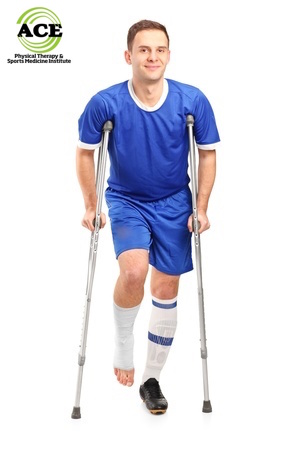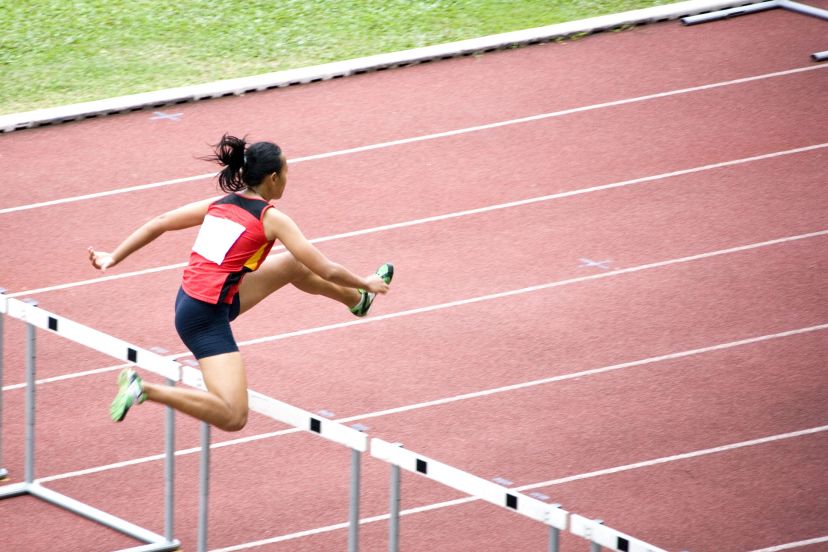Phases of Physical Therapy Rehabilitation

Tid Bits of Info
- Core strengthening can and should be a part of every phase of rehabilitation.
- Most tissue types that must be elongated to gain motion are very non-elastic and more like leather than rubber bands.
- No phase of rehabilitation has a set deadline.
- All phases of rehabilitation “over-lap” the previous one and incorporate some of its aspects.
- Your Physical Therapist will guide you through your rehabilitation and progress you accordingly.
Each patient entering a Physical Therapy Rehabilitation Program will follow a custom regimen. While two patients may enter physical therapy with similar injuries, the regimen may still differ because each person’s body heals at its own speed. Physical Therapists adjust protocols based to accommodate the specific needs of each patient. The overall goal remains the same: to restore patients to pre-injury status. This involves four phases of rehabilitation: Fix, Train, Strengthen, and Progress. The goal in rehabilitation is to have every patient progress through all four phases, but unfortunately this does not occur very often.
Fixing Phase
Initially, the Physical Therapist addresses symptoms while preparing the body to correct the problem. Treatment focuses upon the symptoms of pain, swelling, decreased motion, muscle strength, endurance and proprioception to help begin the process of returning to the pre-injury status. Rehabilitation protocols include modalities, hands on techniques, exercises and activities specific to the patient’s condition. Additionally, the patient is given a home exercise program (HEP) that reinforces the central treatment. This phase might be one of the longest depending on the severity of the injuries.
Training Phase
The Physical Therapist will begin transitioning to a “train it” as the body begins healing and the acute and sub-acute symptoms of the injury begin to resolve. Many of the same protocols will continue but now the focus is on returning the body to its pre-injury status with no deviations. This means preparing the body for a return to normal movement patterns. Joint or soft tissue injuries disrupt normal movement patterns. As a result, patients compensate by adjusting normal motions. The compensation leads to excess energy consumption and can place abnormal stresses and strains on other body parts which can lead to other un-related injuries.
During the “train it” phase, the Physical Therapist’s skills and education play a vital role in helping the patient develop movement patterns and re-establish the functional motion of a particular body part. Re-development of proper movement patterns is dependent upon the nervous system’s ability to control the muscles and joints involved with a particular motion/movement.
The patient is taught to perform activities and exercises that will enhance a specific motion or movement pattern, encompassing all parts of the kinetic chain. Most functional motions and actions do not occur at just one body location. If one aspect of the movement pattern is not proper, the entire pattern and resultant movement will not be as efficient as it should be. The result is a movement that involves motions that are excessive and energy use that will lead to fatigue more easily.
Strengthen Phase
Typically, the “Strengthen It” phase is one of longest periods of rehabilitation. Patients are re-establishing all of the muscular strength and endurance lost or diminished when the body was injured. Strength development takes a long time and a lot of hard work and effort by the patient. The Therapist will establish a plan that will begin the process by having the patient perform exercises and activities against resistance. The repetitions will decrease and the resistance will increase as the patient develops the ability to move the body part against the heavier resistance.
Patients are taught the “over-load” principles of strength development. This simply means that the muscles will get stronger when they are forced to “handle” a greater amount of resistance. The exercise regimen focuses upon strengthening the entire body and returning the whole body to normal movement patterns. Formal therapy session can be reduced as the patient performs the exercise routine at least three times per week using a local gym or other convenient facility.
Progress Phase
The “Progress it” phase is one of the most important phases and unfortunately many patients never get to complete it in the formal Physical Therapy setting. The “Progress it” phase is the time when the injured body part has healed and the body has regained enough strength with proper movement patterns to be “pushed” to regain the pre-injury capabilities.
The body must be re-trained to perform sport, work or life specific movements that will enable the patient to return to their desired activity. If the “Progress it” phase is performed and completed correctly, the patient will have a much greater chance of participating in their activity without experiencing another injury to the same body part.
Rehabilitation of an injured body part follows a set order of protocols. These protocols are specific to a particular injury and patient. Although similar for similar injuries the protocols are unique for every patient. The ability to move from one phase to the next is dependent on the healing time someone’s body.

























